I’m still remembering sun and warmth. Someone asked us, “Why did we come back?” Merely a matter of time and money. Fortunately, the tropical images are still in my mind’s eye and on my computer. Not all of the flora I show you are native to Mexico but they are all growing in Puerto Vallarta.
Those of you who are gardeners will look at Aloe barbadensis Miller and think that it looks familiar. That is because the flower resembles that of the hardy perennial Kniphofia, the Poker Plant, that blooms for us during the summer. This aloe, if you look closely, has thick, fleshy, barbed leaves that are used for medicinal purposes.
A flowering shrub that caught my eye was Pseuderanthemum reticulatum. It is aptly named Yellow Vein Bush as you can see from the photograph. The variegation is most noticeable in full sun. The clusters of flowers have white petals with magenta spots smile up at you and bloom year round in the tropics.
Another flowering shrub, often seen as a hedge in Mexico and in Florida, is Ixora coccinea (Flame of the Woods). Until this trip, I was only familiar with the reddish orange one but this time saw creamy yellow and salmon flowered ones. I have occasionally seen this for sale as an annual in Cleveland greenhouses as a potted plant that will bloom all summer.
The flowers of Eugenia malaccensis (Malay Apple) are most unusual. I’d say they best resemble a wide, splayed paint brush, a terrible description for such a beautiful flower. You do see a few leaves in the background which means that it is almost finished blooming because it is one of those plants that blooms before it foliates. I have read that the fruits that develop do look like apples, are juicy and fragrant, and that the taste is similar to pears but the texture is crunchy like an apple.
A palm is a palm? You won’t think so once you’ve seen Cyrtostachys rendas, the Red Palm. The stems of this palm grab your attention. Wouldn’t it be gorgeous in a container? I don’t think that will happen since it normally grows fifty feet high.
Although we usually visit Puerto Vallarta in March, this year’s February trip enabled me to see flora that evidently blooms earlier. What a bonus!


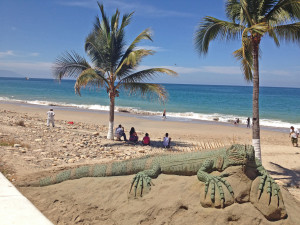
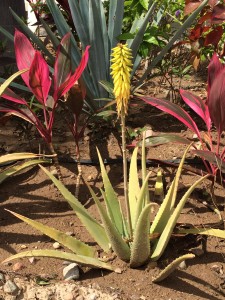
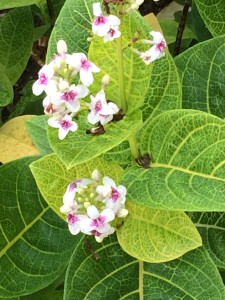
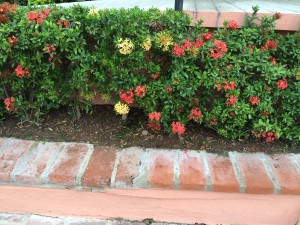
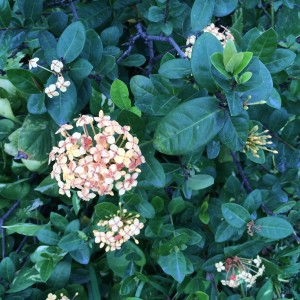
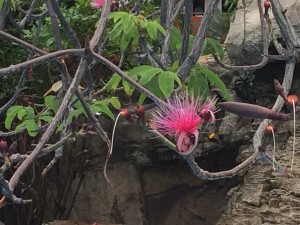
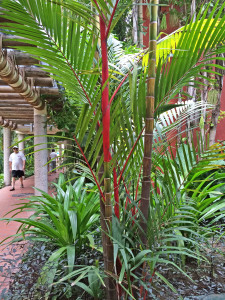
0 Comments